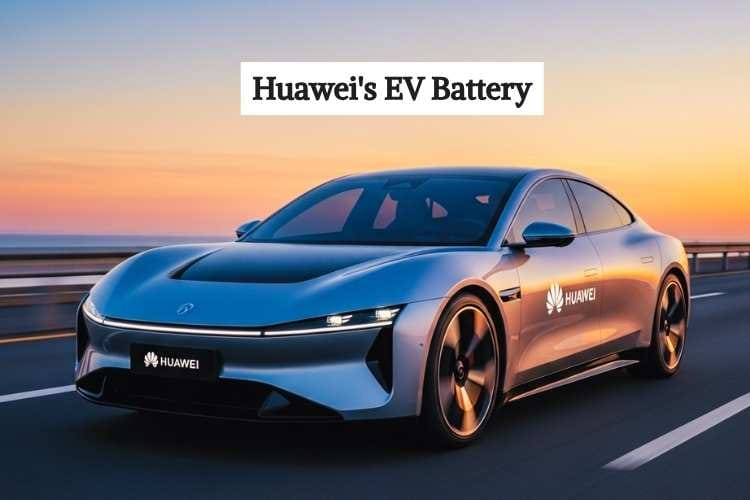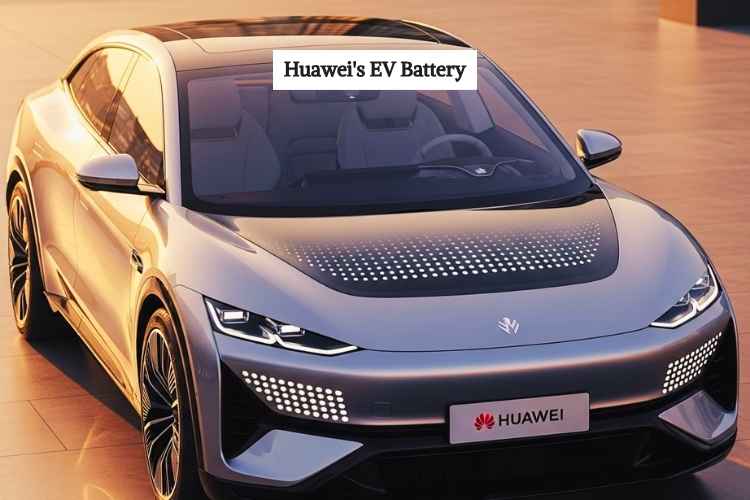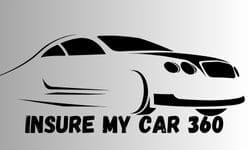Huawei’s EV Battery: Huawei has recently filed a patent for a sulfide-based solid-state battery, boasting a theoretical range of 1,800 miles (≈2,900 km) per charge and a 5-minute full charge. This exploded across headlines, painting a picture of electric vehicle freedom—no more range anxiety or endless charging stops. Yet beneath this vision lie major practical puzzles.

Table of Contents
Huawei’s EV Battery: What’s Being Claimed

- 1,800-mile range: Based on Huawei’s cited 400–500 Wh/kg energy density.
- 5‑minute charge (10–80%): Aligned with “industry standard” fast‑charge metrics.
- Their secret sauce: nitrogen‑doped sulfide electrolyte, which stabilises the lithium‑metal interface, helping prevent dendrite growth and boosting battery
Why These Numbers Are Theoretical
Huawei’s EV Battery: Engineering Realities
⚙️ 1. Battery Weight
- To store ~500 kWh at 400–500 Wh/kg → ~1 tonne battery.
- Too heavy: affects range, dynamics, cost, and safety.
⚙️ 2. Charge Infrastructure
- 5‑minute charge implies multi‑megawatt charging systems.
- Current tech is limited to ~350 kW; megawatt stations exist only in labs.
⚙️ 3. Heat & Safety
- Rapid charge creates massive heat.
- Solid‑state batteries require tight tolerances—heating complicates reliability.
Conclusion
Huawei’s 1,800‑mile and 5‑minute charge claims grab headlines and show where EV tech might eventually head—solid‑state batteries really could redefine the game. But right now, these are prototype-level, lab-stage numbers. The physics, engineering, infrastructure, and massive timelines involved mean it’s more of a vision than an imminent consumer reality.
That said, this patent matters. It pushes global competition forward and signals serious advancements ahead. If Huawei can gradually scale density (e.g., 400 Wh/kg), conduct tests in real vehicles, and build supporting networks, the EV world could be on the cusp of a transformation. For now, buckle in and watch the innovation race—but temper expectations. The electric future is bright, though not quite ultra‑fast and ultra‑long … yet.
Bhakti Rawat is a Founder & Writer of InsureMyCar360.com. This site Provides You with Information Related To the Best Auto Insurance Updates & comparisons. 🔗
